Comparisons 13 min read
Premium electric SUVs from Tesla and Mercedes battle it out
Can Mercedes-Benz compete with Tesla? We headed to Gridserve in Essex to pit two of the cars they’re now offering through a new leasing service against one another – the EQB and the Model Y.
Jump to:
Overview What are they like to drive? Buying, running costs and range Style stakes Space, comfort and practicality Which has the most equipment? VerdictOverview
Tesla’s place in the electric car world has taken on an almost mythical status in which EV enthusiasts, tabloids, lazy and even not-so-lazy hacks almost automatically compare new cars from other manufacturers against Elon Musk’s brand. There’s good reason; when it comes to nailing an EV ecosystem, Tesla is far, far ahead of most other brands. Aside from some varying quality control, Tesla’s cars are good, too.
As such, our first go in the Model Y – Tela’s medium sized SUV – was as much about confirming that it was more of the same from Tesla rather than a step into the unknown. And fortunately, Gridserve was happy to let us have a go in their Model Y Long Range which can be had from less than £600 per month or bought outright from £57,990.
The Mercedes EQB, on the other hand, is a complete unknown and our first foray into the brand’s electric offering. It’s slightly smaller than the Model Y in terms of footprint, and significantly less powerful but to all intents and purposes, does the same thing. It’s a similar price, too, available from around £670 on lease or from £52,750 outright.
What are they like to drive?
Both cars utilise a dual motor, all-wheel drive layout, but the Tesla packs a much bigger punch at 384bhp compared to the Mercedes’ 225bhp. Another thing going in the favour of the Tesla is its weight which at 1979kg undercuts the EQB’s 2105kg.
As you’d expect the Tesla is faster, taking just 5 seconds to reach 62mph whilst the EQB finally reaches the national speed limit around three seconds later. In reality the difference is stark with the Model Y bursting forward with an urgency that will embarrass many supercars. That’s not to say the EQB is slow; its power is ample and is delivered in a linear, unfussy way which – unlike the Tesla – won’t scare unwitting passengers.
When you pitch either car into a corner there is once again a stark difference. The Tesla’s steering can hardly be called communicative, but it is very direct and quick with just two turns lock-to-lock, making the near two-tonne SUV feel like something much smaller and nimbler. It doesn’t pitch and roll heavily, and the grip inspires plenty of confidence in corners before you unleash the car’s straight-line acceleration.
This sporty, direct feeling comes at a cost to the ride, though. The Model Y is fidgety over broken surfaces and whilst it’s a lovely cruiser on well-kept tarmac, it’d get tiring over extended distances on crummy British roads. Jumping straight into the EQB was therefore a welcome break.
If you’re familiar with internal combustion-powered Mercedes cars, the EQB will be immediately familiar. It is quiet, with next to no wind or road noise in the cabin, and it smooths out bumps and surface imperfections that would have the Tesla jiggling your jiggly bits. Don’t go looking for driver engagement, however. Whilst launch models were available with adaptive suspension, passive suspension is now standard and for all the comfort on offer, it rolls in the corners. Disconnected steering feel doesn’t help.
Braking is another area where the Tesla shines. The one-pedal driving feel (with regen that can be altered for strength) is almost perfect with the brake pedal there for decoration most of the time, leaving the 355mm front and 335mm rear discs untouched by the pads. On the Mercedes, one-pedal driving is possible; pull the left-hand paddle behind the steering wheel and ‘D-’ will throw the electronic anchors out, albeit it’s less well judged than in the Tesla. Pull the right paddle and ‘D Auto’ is a middle ground, or you can dial regeneration right back using ‘D+’. This will necessitate the use of the 360mm front and rear discs, though, and they feel distinctly mushy.
Both cars have their plus points, but if you favour engagement, the Tesla Model Y is the car for you.
Buying, running costs and range
As mentioned earlier on, you can lease either of these cars from Gridserve’s new leasing scheme with the Model Y available from just under £600 per month on a personal lease or £100 less on a business lease. The Mercedes EQB will set you back just over £670 on a personal lease or £560 on a business lease on the same terms. Whilst it’s more expensive to lease, the Merc’s list price is slightly lower from £52,750 vs. £57,950 for the Model Y.
Mercedes offers a three-year, unlimited-mile warranty for the EQB with an eight-year, 100,000-mile warranty on the battery. Tesla’s offering is more generous at four-years with unlimited miles and 120,000 miles for the battery.
Running costs aren’t likely to be massively different between the cars albeit the Tesla’s 75kWh battery will cost slightly more to juice than the EQB’s 66.5kWh unit. The Tesla is more efficient on the official test though, achieving 315 miles at around 4.2 miles per kWh. In the real world, around 285 is more likely at 3.8 miles per kWh. The Merc, on the other hand, achieves 253 miles on the official cycle at 3.8 miles per kWh, though closer to 200 miles is more realistic at around 3 miles per kWh.
The Tesla also has the Mercedes licked when it comes to charging, being capable of taking on electrons at 250kW compared to the Mercedes’ max of 100kW. You also get use of the entire Tesla Supercharging network with the Model Y, and whilst this is beginning to open up to other EVs, it still represents a big advantage for the time being.
In the meantime, Gridserve’s electric forecourts are about as close to the Supercharger network as you can get with the Braintree location proving to be a fantastic facility with super-fast charging at reasonable prices. If the future of hub-based charging follows Gridserve’s lead, we’ve nothing to worry about.
Style stakes
Styling really is a subjective matter and with these cars, it’s also likely to be a divisive one. Tesla models look a bit gawky to many, and the Mercedes seems to occupy a weird hinterland between straightforward SUV and an MPV – but it is the more conventional looking of the two.
Tesla offers five exterior colours and two wheel options – 19 inch and 20 inch. The 20s are arguably more attractive, but the 19s will help claw back some comfort. Interior colours are similarly limited, with white or black the only two options. The flush door handles are present and correct, though they are a tad fiddly, and a standard panoramic roof adds to the sense of space once you’re inside the Model Y.
The Mercedes EQB we tested had the AMG Line Premium styling pack which adds a few AMG details around the car such as 19 inch alloys, a better sound system, and wireless charging for mobiles. The wheels were a nice touch, but we’d take or leave the rest of the features. In terms of other exterior styling, nine colours are available and the Mercedes has front and rear light bars which stretch the width of the car as well as a distinctive blocked off grille that is a feature of all electric Mercedes. Roof rails are standard.
Which do we prefer? Well, it isn’t an easy one as neither is obviously more attractive than the other. We’ll call it a draw.
Space, comfort and practicality
As with driving, both cars go about their business in very different ways. Whilst we used a card key with the Tesla, owners can download the Tesla app and use NFC so the Model Y effectively becomes keyless. Once you’re in, you simply need to select drive on the right-hand stalk and you’re off. It’s almost as easy with the EQB which has a traditional fob for access. In-line with its ICE cars, there’s a start/stop button, but once you’ve hit that and selected drive – again using the right-hand stalk – you’re good to go.
Comparing the cabins is like comparing chalk and a punchy French camembert. They’re totally different. Both have their plus points, but in the sheer style stakes, the Telsa wins hands down thanks to its unfussy minimalism. The driving position is ace, too, with the small diameter wheel and feeling of sitting in – rather than on – the car offering a sense of sportiness.
Dominating proceedings is the 15 inch central touchscreen through which you operate everything except high beams, indicators and drive selection. Whilst it is intuitive to use, having to resort to a screen and every time you want to do something trivial is a little frustrating. Sometimes, buttons are useful. However, there’s no denying the smorgasbord of tech on offer including the brand’s latest generation autopilot which features 360-degree cameras, radar with a 160 metre range and 12 ultrasonic sensors.
When you first step into the EQB it feels like stepping back in time compared to the Tesla. There are buttons, switches and even a touchpad on the centre console to control everything from the central 10 inch screen’s readout to the climate control and lights. In short, it’s very conventional. Once you get used to where the buttons are and what they do, it’s also convenient but to our mind, it’s too fussy. For example, the touchpad control which acts like a mouse for controlling the infotainment is useful whilst you’re on the move but feels like a bit backwards when touchscreens are so common now.
Space and comfort wise, neither car is going to leave you feeling short changed. There’s acres of leg and head room in both the front and rear of either car, and passengers in the Mercedes can slide the rear seats fore or aft by up to 30cm or fold them individually. Boot capacity is 854 litres with seats in place on the Tesla or 2158 litres with them folded (and the car laden to the roof). The EQB seems small in comparison at 465 litres and 1710 litres respectively, but we suspect they measure the space differently.
The EQB’s party trick is having a third row of seats that can be pulled up from the boot floor. These are only really good for kids up to 5ft 4 but do come with ISOFIX points. You can spec the Model Y with a third row in some markets, but it’s yet to make an appearance in the UK.
Materials in both cars felt broadly of a decent quality. We didn’t notice any of the quality control issues that have affected some Tesla models, with everything fitting flush and no discernible rattles. For the Merc, it’s just business as usual with plush leather seats and soft touch plastics around the cabin. Elements like the multifunction steering wheel and some of the materials lower down felt a bit cheaper, but most people aren’t likely to notice.
So, when it comes to space and practicality, we’d give this one to the Merc. However, bring the fiddly and fussy controls into the equation and again, we’d err towards the Tesla’s minimalism.
Which has the most equipment?
Both cars come with plenty of standard equipment. The Mercedes-Benz EQB gets the widescreen display with the central 10.5 inch screen being an interface with sharp graphics and full smartphone connectivity. The nav will take into account charging requirements when you set out a route and ensures you’re never at risk of conking out along the way, although the dark hues on the map aren’t the nicest to look at.
With regards to the EQB, Climate control, an array of safety features, heated seats, power folding mirrors, parking sensors and cameras all add to the day-to-day practicality, but you’ll need to stump up more cash for the Driving Assistance package which adds adaptive cruise control, blind spot assist, active lane keeping and pedestrian warning. A single USB-C socket in the rear is a bit of an omission if you have more than one child of smartphone-user age!
On the other hand, the Model Y comes with adaptive cruise control as standard, as well as Tesla Vision which helps mitigate hazards and full 360-degree cameras and a clear, smart navigation system. Power adjustable and heated front and rear seats are standard – which they aren’t on the Merc – and the premium sound system is very good. Again, smartphone connectivity means you can stream via Bluetooth as well as using the Tesla app for vehicle management. Custom driver profiles are also a nice touch. You won’t run out of charging ports either, thanks to four USB ports and two smartphone docks.
If you want enhanced autopilot, which includes auto lane change, autopark, summon and smart summon, it’ll set you back £3400, whilst full self-driving capability adds £6800. Both cars are updated regularly with over-the-air updates.
Verdict
The EQB is Mercedes answer to the Tesla Model Y, except that it’s a lot more SUV in appearance, and has the practicality that comes from it – namely the seven seat option and comes with all the luxury and comfort you expect from the three pointed star badge.
They do a lot of the same things but they’re also pretty different and will therefore appeal to different audiences we imagine.
The Mercedes isn’t a bad EV by any stretch of the imagination. In fact, when it comes to interior space, practicality and comfort, it has the Tesla beat. But it’s an EV in the style of a conventional car which will appeal to current Mercedes owners looking to make the switch to electric with the home comforts that they’re used to. It’s also a little lumbering, a bit dull to drive, not very quick to charge and way too fussy inside – not to mention coming with less tech as standard. As a result, it loses out in every other area.
The Tesla wins the day thanks to its more engaging drive, better efficiency, longer warranty, modern interior and the fact that it’s extremely intuitive to operate. It’s not without its faults; controlling everything from the touchscreen isn’t ideal and it’s not as comfortable as the Mercedes, but as an ownership prospect, we reckon it’s the one to go for.
1st place: Tesla Model Y
Discover EV expert verdict: 4/5
Pros
Fast and entertaining to drive
Excellent range and charging
Intuitive to use
Cons
Jiggly ride
Accessing some features isn’t easy with the touchscreen
Annoying door handles
2nd place: Mercedes-Benz EQB 300 4 Matic
Discover EV expert verdict 3/5
Pros
Comfortable, practical and spacious
Familiar to owners of conventional cars
Usual Mercedes quality
Cons
Fussy interior
Uninspiring to drive
Thirsty for electrons
If you want to test drive either of these cars, or any of the other ones now offered through Gridserve Electric leasing, check out its website.
KEY SPECS: HEAD TO HEAD
|
Tesla Model Y Long Range |
Mercedes EQB 300 4MATIC |
|
|---|---|---|
| Price (RRP OTR): | From £57,950 | From £52,750 |
| Top speed: | 135mph | 99mph |
| Power: | 384bhp | 225bhp |
| Torque:424 | 424lb-ft | 288lb-ft |
| Driving range:331 | 331 miles | 253 miles |
| Charging time at 3.7kW, 0-100%: | 22 hours | 17 hours |
| Charging time at 11kW, 0-80%: | 8 hours 15 mins | 7 hours 15 mins |
| Max charging capacity, 0-80%: | 40 mins (250kW) | 36 mins (100kW) |
| Insurance group: | 50 | 45 |
| Vehicle warranty: | 4 years | 3 years |
| Battery warranty: | 8 years/120,000 miles | 8 years/100,000 miles |

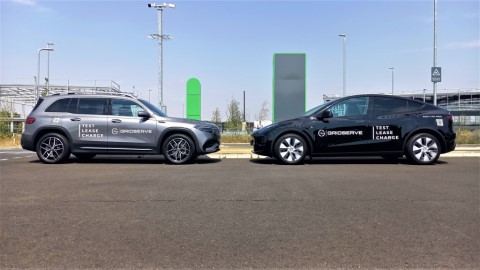
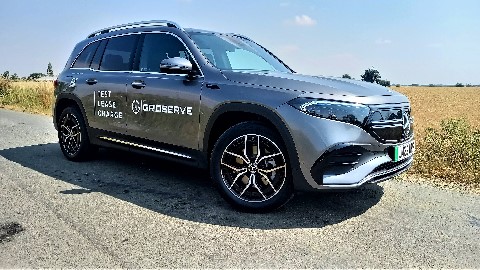
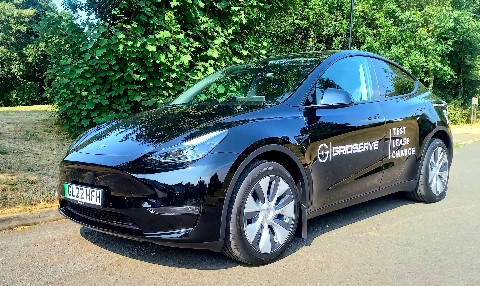
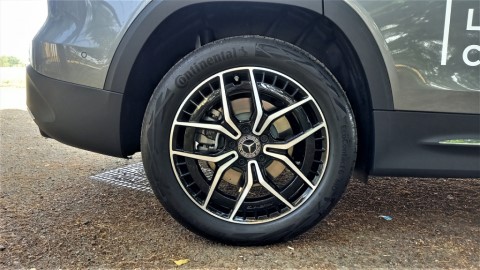
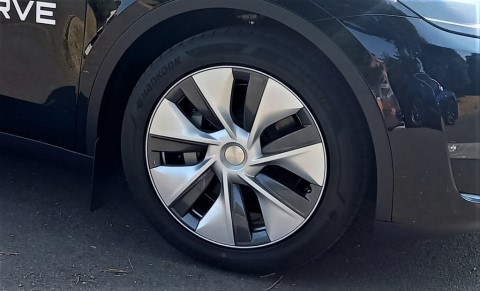
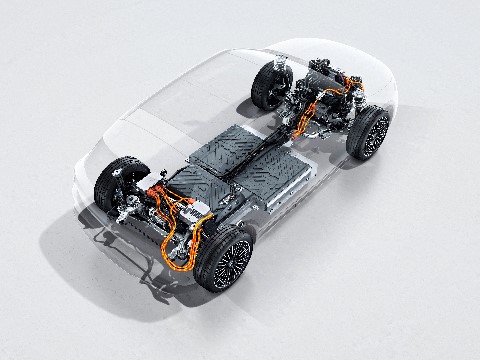
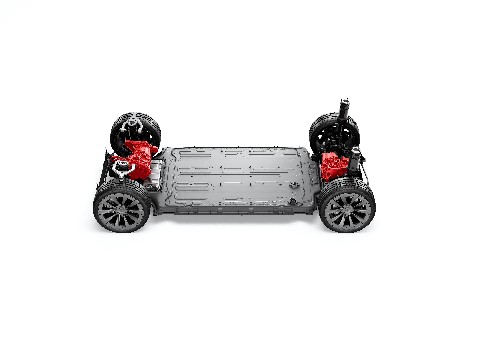
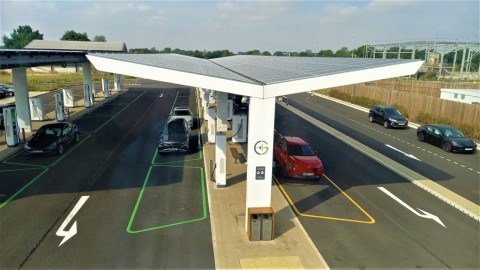
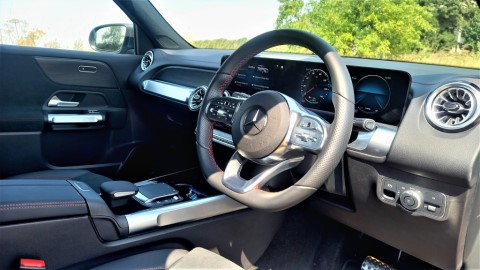
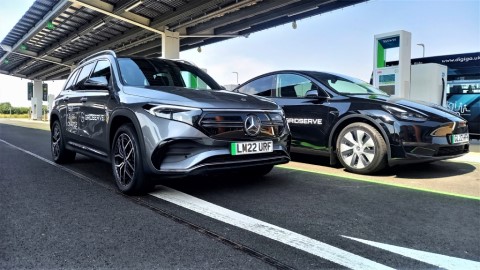
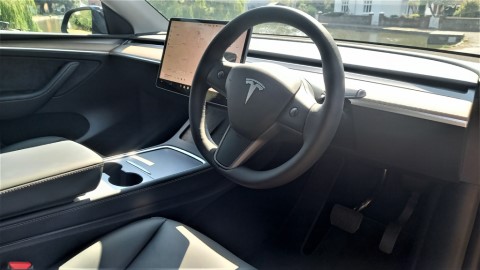
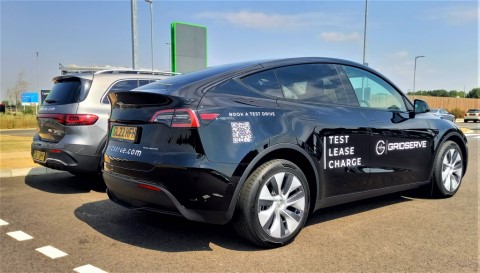
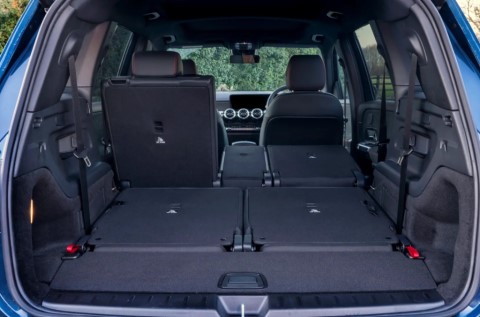
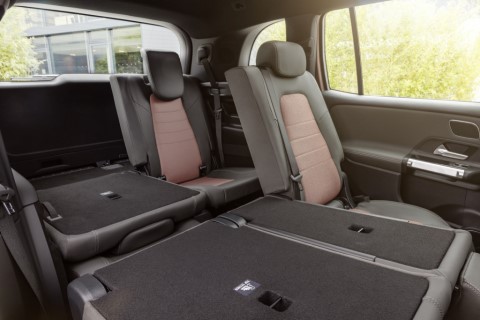
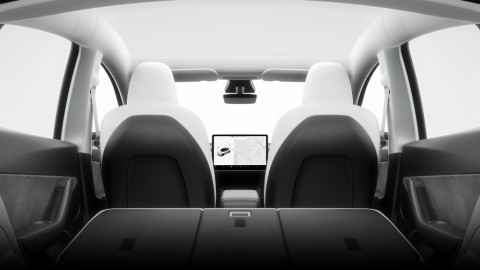
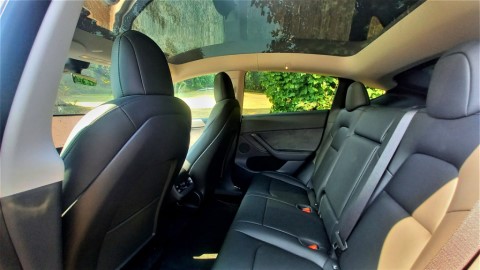
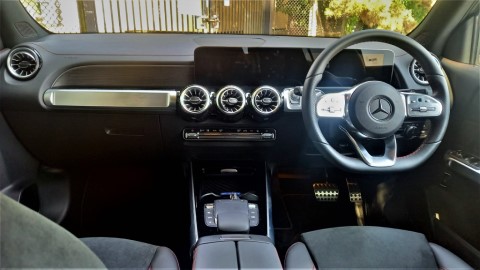
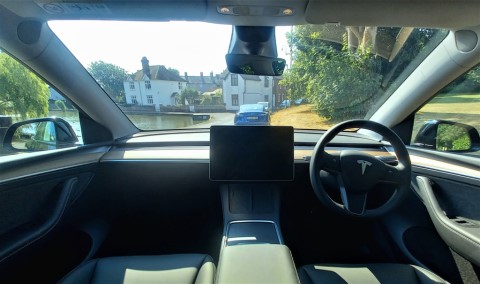
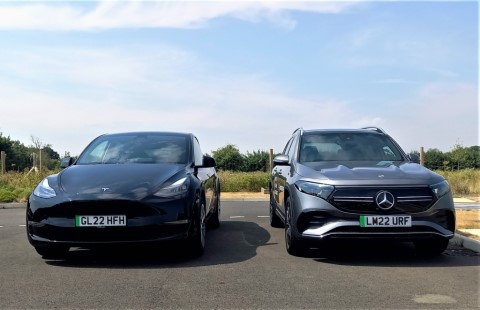
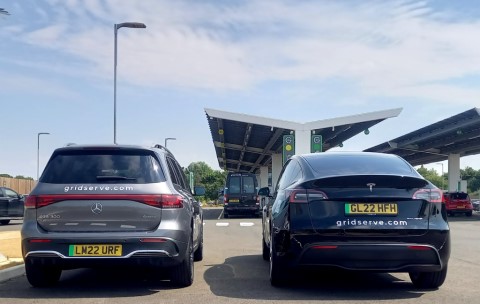

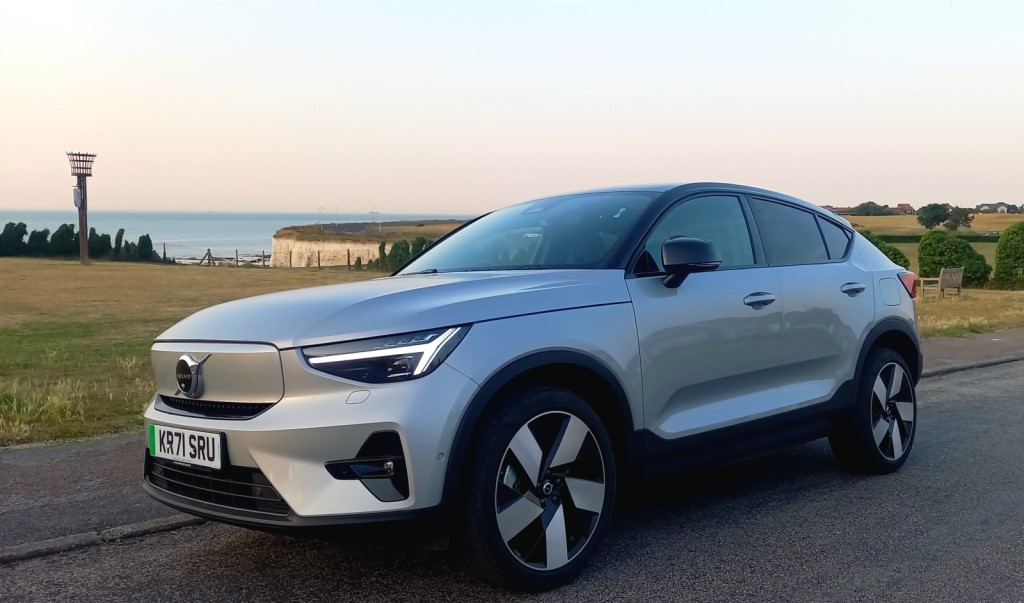
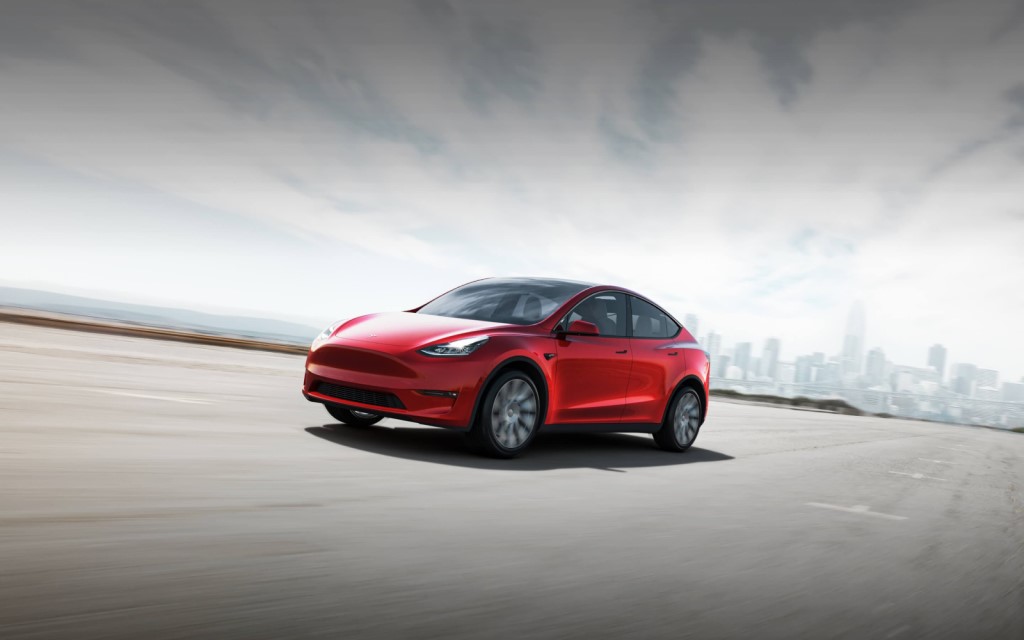
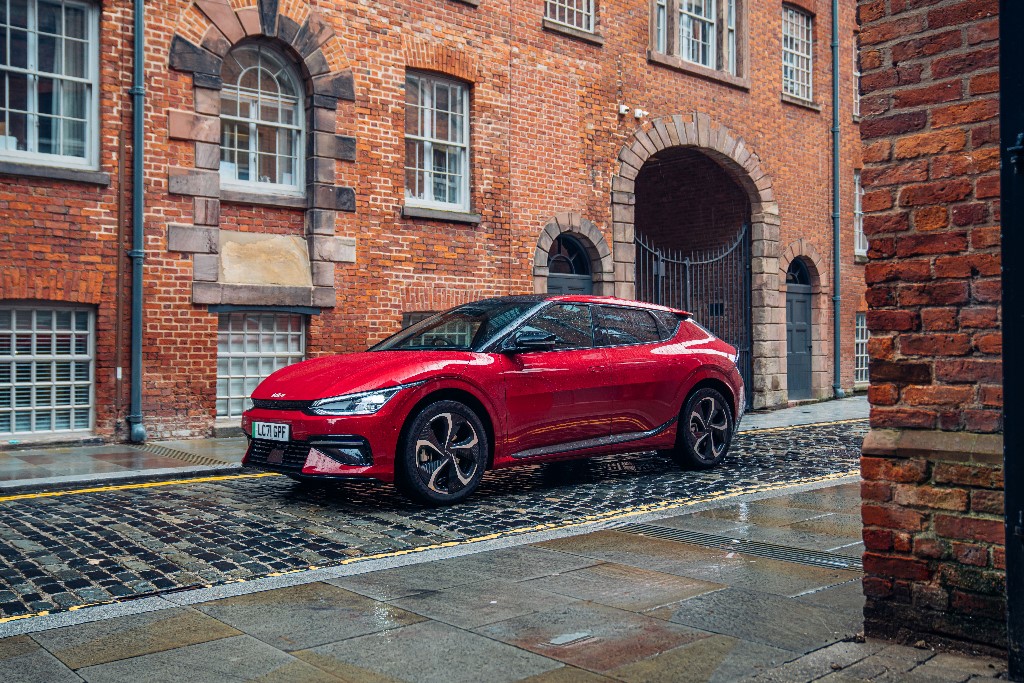
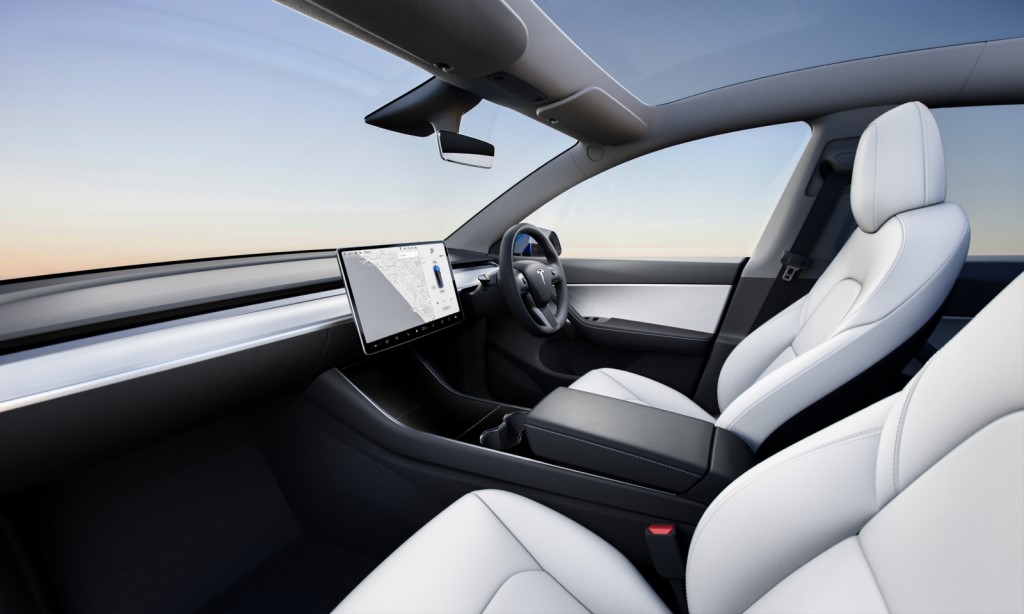
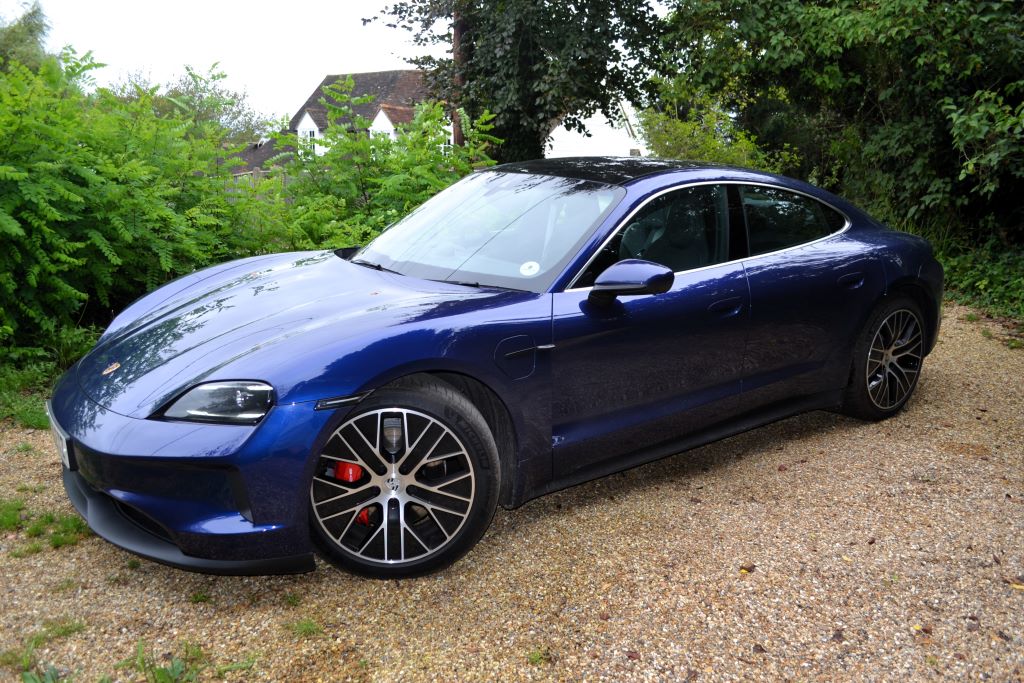


Comments (0)
Be the first to write a comment
Login/ Signup